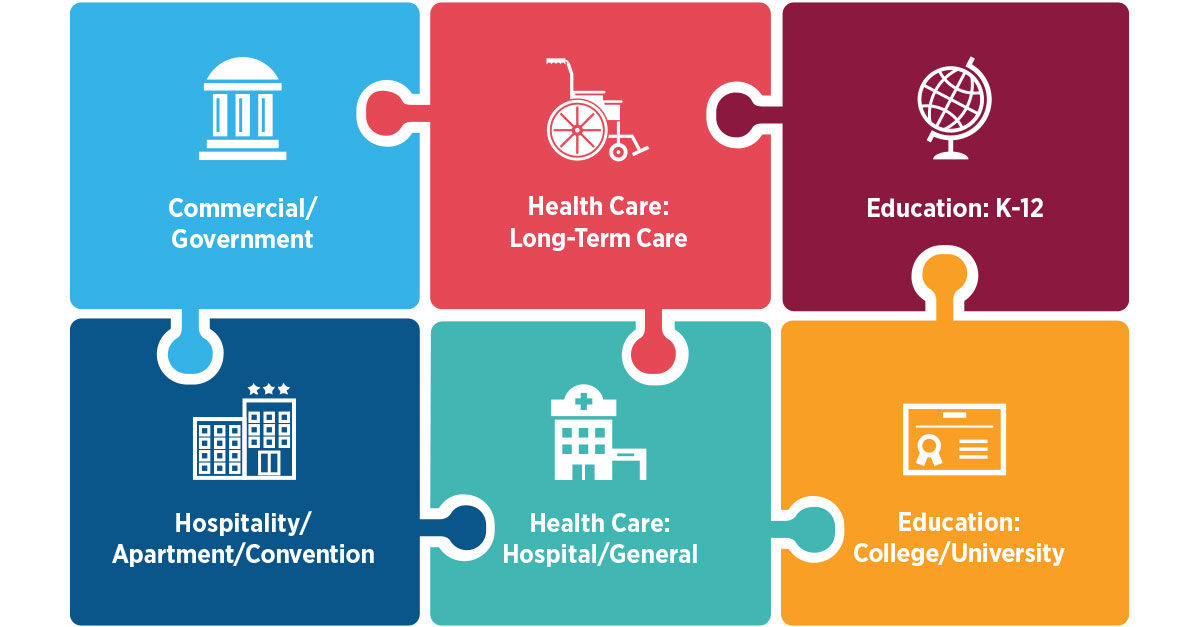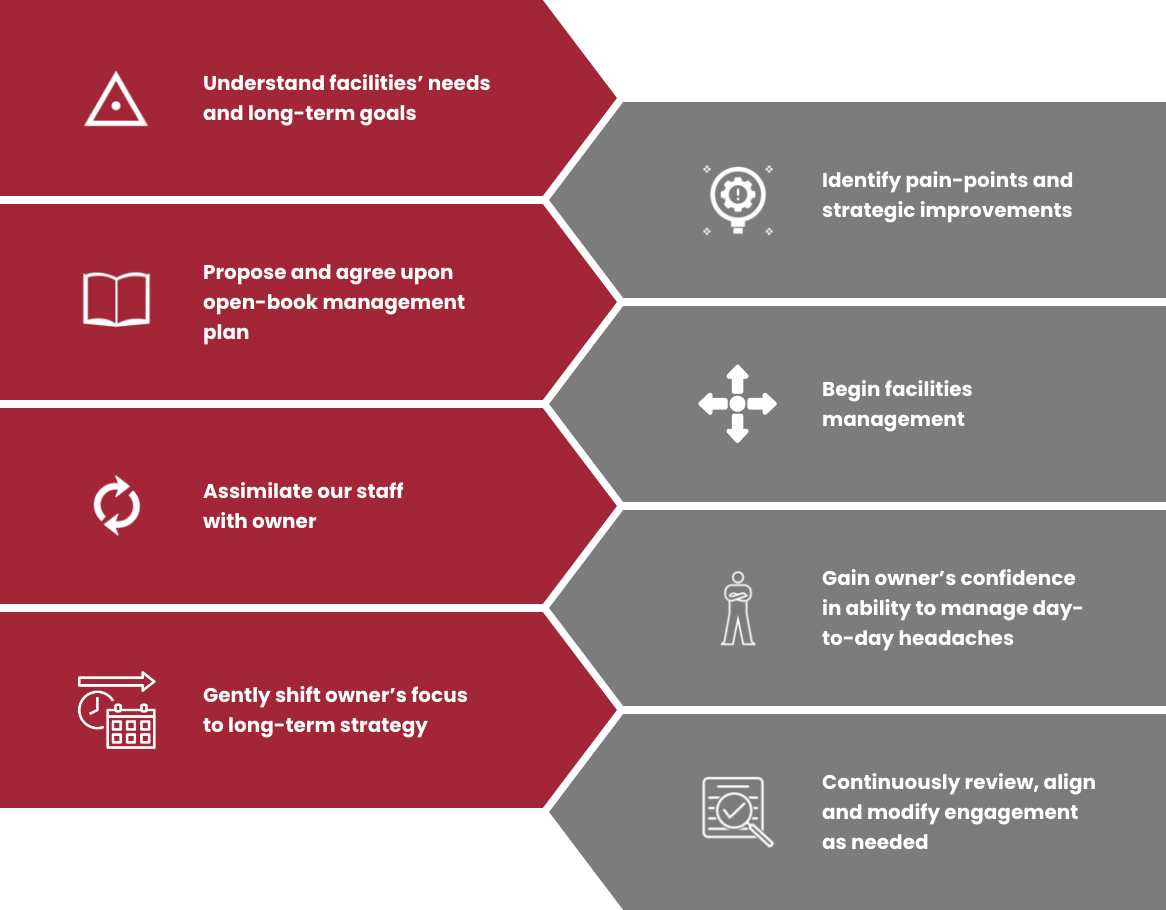Why Facility Management is Crucial for Property Long Life
Wiki Article
Trick Trends Shaping the Future of Center Monitoring in 2024
As we look ahead to 2024, the landscape of facility monitoring is positioned for considerable improvement, driven by numerous key fads. The assimilation of clever structure technologies and a shift towards data-driven decision-making pledge to improve operational efficiency while prioritizing sustainability in practice.Smart Building Technologies

Smart structure modern technologies include a wide array of systems, including smart lighting, cooling and heating controls, and safety and security systems. By incorporating these systems, center supervisors can monitor and adjust criteria in real-time, leading to considerable reductions in energy waste and functional expenses. For example, smart sensors can find tenancy levels and change lights and temperature level as necessary, ensuring that power is only utilized when essential.
Furthermore, these innovations help with boosted information collection, permitting companies to track usage patterns and identify chances for additional improvements. The execution of clever building technologies not only adds to sustainability objectives however likewise develops much healthier workplace that can increase worker efficiency and complete satisfaction.
As we relocate into 2024, the adoption of wise structure modern technologies will likely increase, reflecting a wider change towards even more intelligent, receptive, and sustainable center management methods.
Data-Driven Decision Making
Progressively, organizations are leveraging data-driven decision making to improve center monitoring practices. By using data analytics, center supervisors can acquire workable insights that substantially improve operational performance and resource allowance. The combination of sophisticated technologies, such as IoT sensing units and real-time monitoring systems, allows the collection of huge amounts of data on structure efficiency, occupancy prices, and power intake.This wide range of information enables facility managers to determine patterns, predict maintenance demands, and proactively address issues before they rise. For circumstances, anticipating analytics can forecast equipment failings, minimizing downtime and repair prices. In addition, data visualization tools help with better communication amongst stakeholders, ensuring that notified choices are made collaboratively.
Furthermore, data-driven approaches enhance critical preparation by allowing center supervisors to analyze the performance of present practices and make educated selections concerning investments in technology or framework. As organizations increasingly prioritize functional excellence, data-driven choice making is poised to come to be a cornerstone of successful facility management techniques in 2024 and past. Inevitably, the ability to utilize information effectively will encourage organizations to develop a lot more effective, effective, and durable facilities.
Sustainability and Green Practices
The focus on data-driven decision making normally lines up with the expanding emphasis on sustainability and eco-friendly techniques within facility monitoring. As organizations increasingly prioritize environmental responsibility, center managers are leveraging analytics to maximize resource usage, decrease waste, and reduce carbon impacts. This tactical strategy allows the assimilation of energy-efficient systems, such as LED lighting, clever cooling and heating controls, and renewable resource sources into center procedures.Additionally, the application of lasting practices expands past energy consumption. Facility managers are taking on environmentally friendly products and advertising reusing efforts to develop a round economic situation within their facilities. This not only improves the ecological account of the organization but additionally promotes a society of sustainability among employees.
Compliance with environmental regulations is another crucial facet driving the adoption of green techniques. By utilizing data analytics, facility managers can keep an eye on conformity metrics and identify locations for renovation, guaranteeing adherence to international and neighborhood sustainability criteria.
Hybrid Work Versions
A significant change towards hybrid work models is improving the landscape of facility monitoring in 2024. This paradigm incorporates remote and in-office work, requiring a reevaluation of room usage, source allocation, and employee involvement techniques. Organizations are progressively acknowledging the importance of flexible work spaces that satisfy diverse demands and preferences.Center managers must adapt by carrying out functional office styles that support collective efforts while supplying locations for focused work. This includes the integration of innovation to promote seamless communication and partnership among remote and in-office employees. Smart structure options, furnished with sensing units and analytics, enable real-time tracking of area use, making it possible for companies to maximize their settings efficiently.
Furthermore, hybrid work designs stress the demand for efficient facility monitoring that prioritizes staff member experience. In essence, the hybrid work version is transforming center try here monitoring, urging a positive technique to meet the progressing demands of the workforce.
Enhanced Occupant Wellness
As organizations welcome hybrid job models, an increased emphasis on occupant wellness is coming to be important to facility management methods. Facility Management. This shift identifies that a pleased and healthy and balanced labor force directly impacts efficiency and retention rates. Center supervisors are currently focusing on atmospheres that advertise physical and psychological wellness, integrating components such as natural lighting, biophilic layout, and easily accessible wellness sources
Modern technology plays an essential function in this evolution. Smart building systems can check environmental factors and readjust setups in real-time, making sure optimum convenience levels - Facility Management. Furthermore, comments devices, such as tenancy sensing units and staff member surveys, allow center managers have a peek at these guys to continuously fine-tune wellness efforts based on owner requirements.

Final Thought
In 2024, the future of facility administration will certainly be considerably influenced by the assimilation of clever building technologies and data-driven decision-making, fostering boosted functional performance. Sustainability initiatives will certainly prioritize eco-friendly techniques, while the introduction of hybrid job versions will necessitate adaptable office layouts. In addition, an increased concentrate on occupant health through innovative a/c systems and biophilic design will certainly add to much healthier workplace. These fads collectively emphasize the advancing landscape of center management in reaction to modern difficulties and chances.Center managers are embracing eco-friendly products and advertising reusing campaigns to create a round economy within their centers.A considerable shift in the direction of hybrid job versions is reshaping the landscape of facility monitoring in 2024.Moreover, hybrid job versions emphasize the requirement for reliable facility administration that web focuses on employee experience.As companies welcome hybrid job models, an enhanced emphasis on passenger health is becoming essential to facility administration approaches.In 2024, the future of facility management will certainly be significantly influenced by the assimilation of smart building innovations and data-driven decision-making, promoting enhanced functional effectiveness.
Report this wiki page